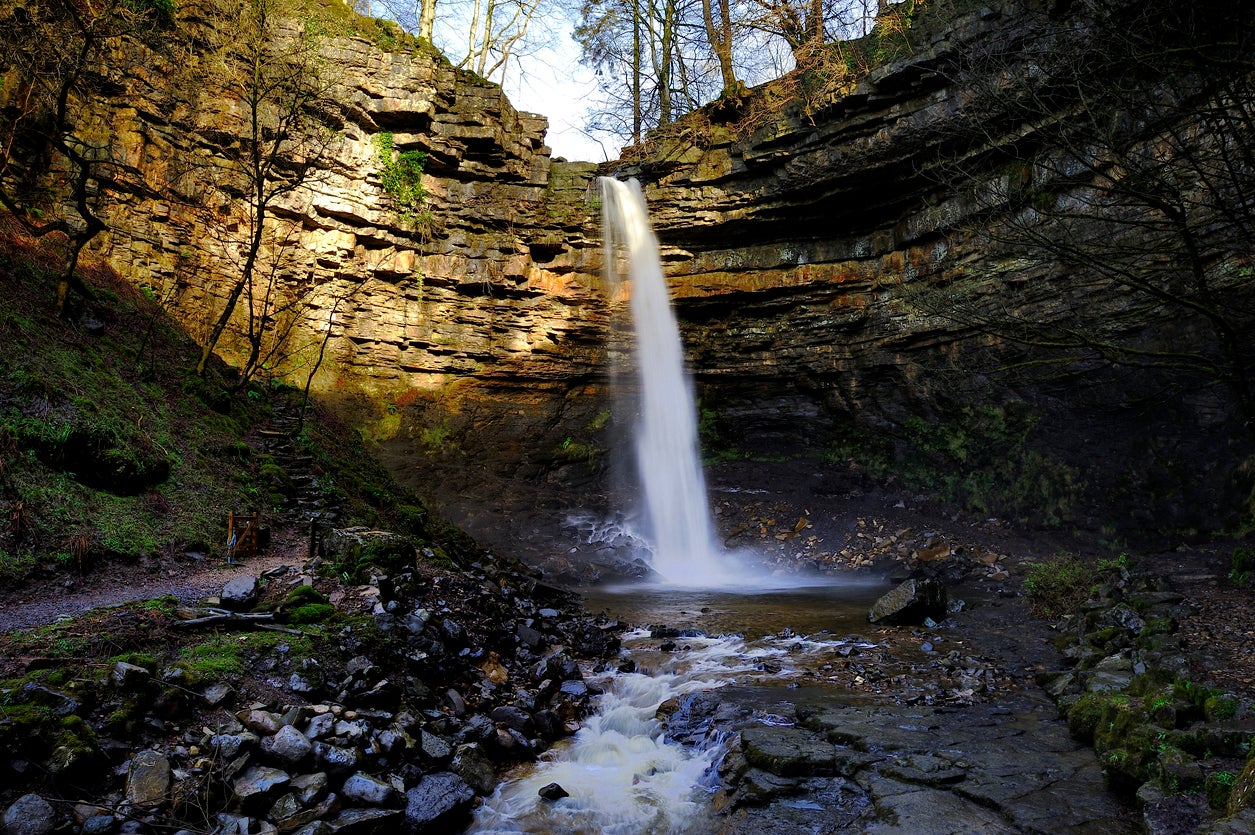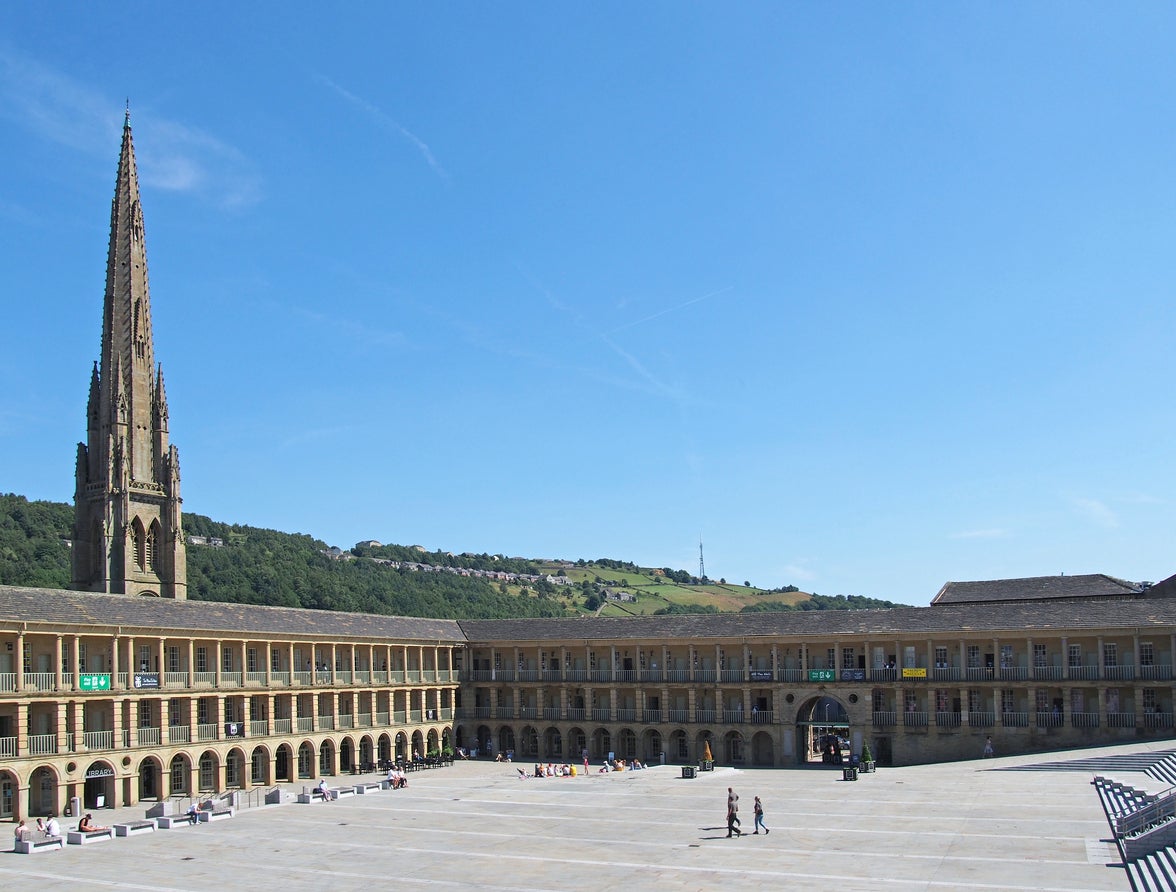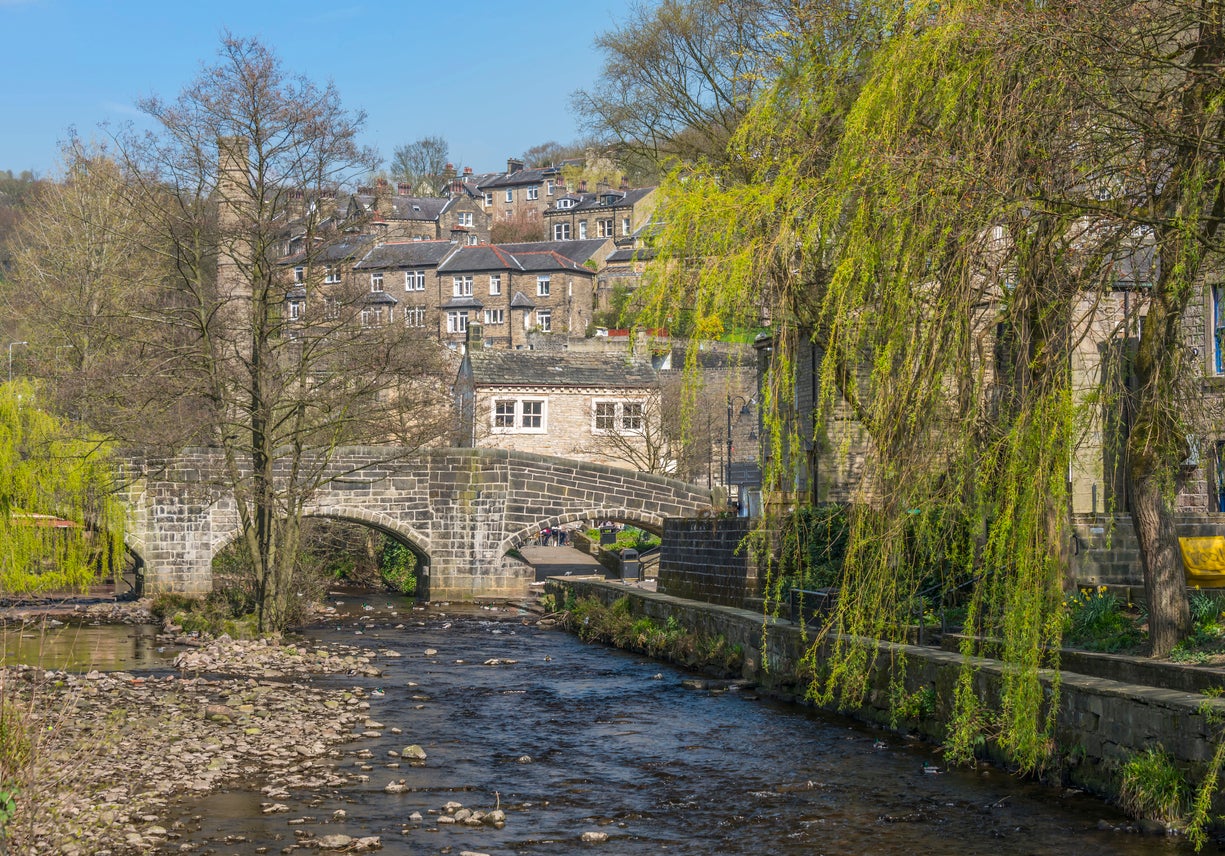That Summer: A tour of Yorkshire in 2015
Not even ceaseless downpours could stop Colin Drury falling back in love with his home county


Your support helps us to tell the story
From reproductive rights to climate change to Big Tech, The Independent is on the ground when the story is developing. Whether it's investigating the financials of Elon Musk's pro-Trump PAC or producing our latest documentary, 'The A Word', which shines a light on the American women fighting for reproductive rights, we know how important it is to parse out the facts from the messaging.
At such a critical moment in US history, we need reporters on the ground. Your donation allows us to keep sending journalists to speak to both sides of the story.
The Independent is trusted by Americans across the entire political spectrum. And unlike many other quality news outlets, we choose not to lock Americans out of our reporting and analysis with paywalls. We believe quality journalism should be available to everyone, paid for by those who can afford it.
Your support makes all the difference.The rain comes fast and often in Hawes. Something to do with geography, apparently. It’s a little market town high in the Yorkshire Dales but in a valley too, so when the clouds come sailing over the hills, slate grey and full, this is where they burst.
Hawes is a place where old men and their dogs sit steaming around inn fires, even in summer.
When the downpour came for us that holiday back in 2015, we were ill-prepared: out walking in the vast countryside which rolls away from the town. We didn’t know the weather could turn on a sixpence – we were in pumps and open-neck sweaters. No flask of tea in our rucksacks. No rucksacks, even.
And as we got thoroughly soaked, I knew what she, my partner, was thinking. I knew because she said it out loud. Why on earth did we come to Yorkshire, in the north of England, for a two-week summer break?
It was a good question then and a good one now – not least because we’re both from county, born and bred. They say you can tell a Yorkshire person but you can’t tell them much. I think that means we’re proud. (Maybe stubborn, but let’s go with proud.)
And there’s plenty to be proud of. In this sprawling swathe of Britain, there are three national parks, 160km of glorious coastline and – in Sheffield and Leeds – two of the country’s finest cities. In York, there’s arguably its most historic.
Don’t take my word about the appeal, mind. In 2014, it was named the third best region on earth by Lonely Planet. Around the same time, the New York Times included it in its prestigious annual countdown of 52 must-visit places. “A big destination for beer lovers,” was its hiccuppy verdict. It was number 22 on the Times’ list – I remember that because it was one above Dubai where, as it happened, I was living at the time.
So it was that I came to be thinking of the grey of home one day, while sitting by a swimming pool on the burning hot roof of a Middle East skyscraper. I came to the sudden realisation that, blimey, I’d never seen vast stretches of the places I was from; I’d never looked around the third best region on earth.
Which is why, in the summer of my 32nd year, my partner and I were in that sopping wet field.

Specifically, we were searching for nearby Hardraw Force, England’s highest waterfall. We found it too, despite the deluge. It’s located out the back of a 13th-century tavern – possibly the world’s only natural phenomenon you have to walk through a boozer to get to. Stunning, it was – the waterfall, not the ale house. More powerful and more pronounced for that afternoon’s rain. And afterwards? We went back into the low ceilings and brass awnings of the Green Dragon and sat with pints and peanuts, steaming off in front of the fire.
This was day four of a 10-day railway tour. We’d started, initially, in Yorkshire’s south: Sheffield. A city sat on seven hills and five rivers; the centre of a region made great by steel and coal, and football too. This is where the world’s favourite game was invented – the rules played today were formulated here.
If you go on a Saturday afternoon, you can watch the planet’s oldest club – Sheffield FC, founded in 1857 – play in front of just a hundred or so spectators. It’s cold on the terraces, even in a scarf, but the pies they serve warm you through.
We spent two days in the city, seeing friends mainly. We’d lived there four years and liked it so much we live there again now. The visitor stuff’s pretty good – the Winter Garden, Europe’s biggest urban glass greenhouse, is a particular jaw-dropper – but it’s the lack of pretention I like most. In Sheffield, grown men call each other ‘love’ for no reason I’ve ever been able to ascertain.
From there we headed to Halifax, a town built on textiles and made rich during the industrial revolution. Today, there are too many betting shops and take-aways, but look up at the architecture and it can still take your breath away. The 18th-century Piece Hall, in particular, is the kind of jewel which, if it was in Barcelona, would attract people from across the globe. Once it was a wool exchange where merchants would wheel and deal their wares in its 300 rooms, all of them opening out onto a vast central plaza. Today, it’s all indy boutiques and bars.
Not far away is Hebden Bridge, a canal town down in the Upper Calder Valley, where bric-a-brac housing climbs up rising hills. Hundreds of hippies arrived here in the Sixties and moved into homes left empty by one-time mill workers. They squatted there, grew old and got respectable. Their legacy is that, today, the place is an oasis of arts and alternative cultures cut roughly into the slopes.

From there, we struck out for the Dales and for Hawes. Damp it may have been, but wonderful too; all bookshops and tea houses. And, at the top of the main road, perhaps the world’s most famous cheese factory: the Wensleydale Creamery. We watched a cheese-making demonstration there and then at the end – and let’s not pretend this wasn’t why we really came – we got to sample around two dozen different varieties.
Just once a week, on a Tuesday afternoon, there was a bus from Hawes to the nearby town of Masham. It took an hour and a half because, instead of going direct, it wound and wandered between various sights and settlements.
The bus itself was vintage, restored by owner Chris Bulmer who was the conductor that day. He said things like “all aboard”, despite only a handful of people ever getting on. He was a man clearly in love with his vehicle and his county. Who could blame him?

Round every corner of this route was a little piece of history: Jervaulx Abbey (1156), Bolton Castle (1378), and, best of all, Aysgarth Falls, a spectacular triple flight of waterfalls in the River Ure where William Wordsworth once sat and wrote poetry.
Eventually, the journey ended in Masham’s glorious Georgian square. We stopped by the King’s Head Hotel, a place which, despite serving a town of just 1,200 people, comes on like the Grand Budapest, all vaguely faded opulence. The restaurant did a shoulder of lamb to knock your socks off.
Masham itself is mainly famous for two things, and they’re both breweries. Theakstons has been run by the Theakston family since 1827. Its rival was set up by a disgruntled cousin in 1991. He called it Black Sheep because that’s what everyone in town considered him.
“Is it like Puma and Adidas in Herzogenaurach?” I asked the receptionist at the King’s Head. “You have to pick a side and stick to it?”
“No, no,” he said, flat Yorkshire vowels invading a Polish accent. “We drink both. Support local business.”
Onwards to Leeds which, they’ll tell you, is the capital of the north. Although, of course, they tell you that in Manchester too. And in Liverpool and Newcastle. I once heard a lad call Wigan the capital of the north.
Back in the Nineties, the local council managed to remodel Leeds as the UK’s biggest financial centre outside London. They got an airport and a flagship Harvey Nichols. Wealth has flowed in since – in 2013, with the global economic downturn still in full force, it became the only city in Europe to open a major shopping centre. The glass domes of Leeds Trinity were, within a couple of years, already a much-cherished part of the skyline.
We moseyed round the Royal Armouries museum and Leeds Art Gallery and Harewood House. And later, on the last night, when the sun went down – the sun now a permanent fixture for the rest of the trip – we headed up onto the roof of Belgrave Music Hall where we ate pizza and watched live bands till late.
They say you can tell a Yorkshire person but you can’t tell them much. I think that means we’re proud (or stubborn)
The next day, we were headed for the coast. Staithes was arguably the headliner of the whole tour: a tiny fishing harbour, its colourful cottages winding up steep cliff roads. This place is a warren of narrow streets, nooks, crannies and alleyways. Smugglers used to like it apparently because of all the hideaways. Some liked it so much they stayed. I guess places like Staithes civilise a person.
There wasn’t much to do there, actually. You walk the cliffs and take in the views. From up the tops, it seems like you can see forever; west back into England and east out across the water, over to where the rest of Europe lies.
On our last day, there wasn’t a cloud in the sky. We sat on a bench, under a blue sky, eating fish and chips. It was a beautiful day in Yorkshire.
Join our commenting forum
Join thought-provoking conversations, follow other Independent readers and see their replies
Comments